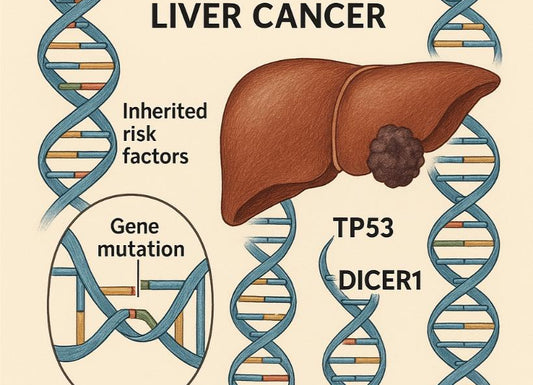Signs Your Liver Is Healing: What to Expect and How to Support Recovery
 Written By
Yusela Aquino
Written By
Yusela Aquino

Have you checked your liver’s health? It detoxifies your blood, metabolizing nutrients, and regulating essential bodily functions. But when it’s damaged by alcohol, fatty liver disease, medications, or an unhealthy lifestyle, its function can become compromised. Fortunately, your liver has a remarkable ability to regenerate and heal itself, especially when given the right support!
Understanding the signs of liver healing can help you stay motivated on your journey to better health. Whether you’re cutting out alcohol, improving your diet, or managing liver disease, recognizing your progress can provide reassurance and encouragement. Here’s how to know your liver is getting healthier—and what you can do to support its recovery.
Early Signs of Liver Healing After Quitting Alcohol

Your liver begins repairing itself almost immediately after you stop drinking. Within days, you might notice changes such as:
- Improved digestion. Alcohol disrupts gut health, leading to bloating and acid reflux. As your liver heals, these symptoms may subside.
- More energy. A damaged liver struggles to process nutrients and eliminate toxins, leaving you fatigued. As it recovers, you may feel a natural boost in energy.
- Possible skin improvements. Some people notice their skin looks healthier as overall health and detoxification improve, though this is not a definitive marker of liver healing.
See related: Skin Signs of Liver Damage
Signs Your Liver Is Healing from Fatty Liver Disease
Fatty liver disease, particularly non-alcoholic fatty liver disease (NAFLD), can be reversed with lifestyle changes such as weight loss, a balanced diet, and regular exercise. Signs that your liver is healing include:
-
Gradual Weight Loss, Especially Around the Abdomen
Excessive accumulation of fat in the liver contributes to inflammation and damage. Losing 5-10% of total body weight has been shown to reduce liver fat, lower inflammation, and even improve early-stage fibrosis. -
Improved Cholesterol and Triglyceride Levels
Fatty liver disease is often linked to high triglycerides and LDL ("bad") cholesterol, along with low HDL ("good") cholesterol. As liver function improves after weight loss and dietary changes, blood lipid levels may also normalize. However, genetics and medications can also influence these levels. -
Better Liver Enzyme Levels (ALT & AST)
A decline in ALT (alanine aminotransferase) and AST (aspartate aminotransferase) levels on blood tests is one of the clearest indicators of liver recovery. Elevated liver enzymes signal inflammation, so their reduction suggests reduced liver stress. Other markers like GGT (gamma-glutamyl transferase) and ALP (alkaline phosphatase) may also improve, especially in cases of liver damage related to alcohol or bile duct issues.
While these signs suggest liver healing, follow-up blood tests, imaging (such as liver ultrasound or FibroScan), and medical advice are essential to confirm long-term recovery.
How to Support Liver Healing

Your lifestyle plays a crucial role in liver recovery. To promote healing, focus on:
- Eating nutrient-dense foods. Leafy greens, lean proteins, healthy fats, and antioxidant-rich foods help reduce inflammation and support detoxification.
- Staying hydrated . Water helps flush toxins and aids bile flow, easing the liver’s workload.
- Avoiding processed foods, sugars, and trans fats. These stress the liver and slow down recovery.
Liver Recovery Timeline After Quitting Alcohol
If you quit drinking alcohol, your liver will start to heal after days or weeks. If you were a chronic alcohol drinker, your liver’s health might take months to a year to improve.
Alcohol abstinence for at least 30 days can help restore your liver cells. Those who are heavy drinkers may need to abstain from drinking alcohol for 12 months for their liver to recover.
Final Thoughts

Your liver’s ability to regenerate is remarkable! From increased energy and better digestion to stabilized enzyme levels, these signs indicate that your efforts are paying off.
To track your progress, consider using at-home liver test kits like Ribbon Checkup. Ribbon is an easy way to monitor urine liver enzyme levels. With ongoing healthy choices, you can support long-term liver health and overall well-being!
References
Brunner, K. T., Henneberg, C. J., Wilechansky, R. M., & Long, M. T. (2019). Nonalcoholic fatty liver disease and obesity treatment. Current Obesity Reports, 8(3), 220–228. https://doi.org/10.1007/s13679-019-00345-1
Fatigue - Liver Foundation. (n.d.). Liver Foundation. https://liver.org.au/your-liver/symptoms/fatigue/
Glass, L. M., Dickson, R. C., Anderson, J. C., Suriawinata, A. A., Putra, J., Berk, B. S., & Toor, A. (2014). Total Body Weight Loss of ≥10 % Is Associated with Improved Hepatic Fibrosis in Patients with Nonalcoholic Steatohepatitis. Digestive Diseases and Sciences, 60(4), 1024–1030. https://doi.org/10.1007/s10620-014-3380-3
Global Liver Institute. (2024, April 25). Healthy Eating, Healthy liver: The links between nutrition and liver Wellness - Global Liver Institute. Global Liver Institute. https://globalliver.org/healthy-eating-healthy-liver-the-links-between-nutrition-and-liver-wellness/
Holmer, M., Lindqvist, C., Petersson, S., Moshtaghi-Svensson, J., Tillander, V., Brismar, T. B., Hagström, H., & Stål, P. (2021). Treatment of NAFLD with intermittent calorie restriction or low-carb high-fat diet – a randomised controlled trial. JHEP Reports, 3(3), 100256. https://doi.org/10.1016/j.jhepr.2021.100256
Is alcohol harming your stomach? | Drinkaware. (n.d.). Drinkaware. https://www.drinkaware.co.uk/facts/health-effects-of-alcohol/general-health-effects/is-alcohol-harming-your-stomach
News-Medical. (2023, April 8). How do Certain Foods Affect the Liver? https://www.news-medical.net/health/How-do-Certain-Foods-Affect-the-Liver.aspx

Yusela is a medical student with a degree in Biology and a strong foundation in health communication. With experience in both research and clinical settings, she writes clear, evidence-informed content to help patients and caregivers better understand liver health, chronic disease, and transplant care.



